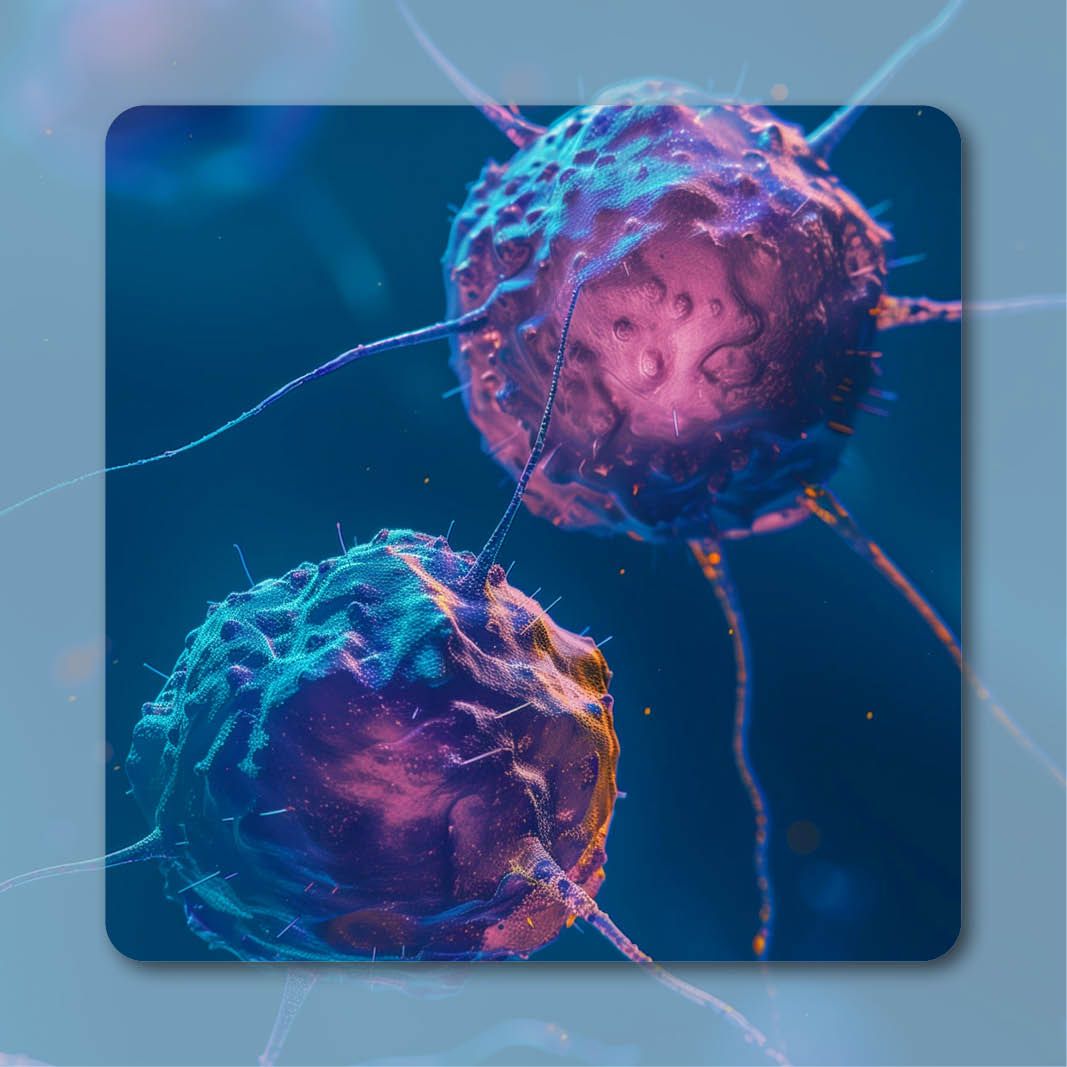News
Article
HS-20093 Generates Responses in Pretreated ES-SCLC
HS-20093 produced responses in extensive-stage small cell lung cancer after prior platinum-based chemotherapy with or without prior immunotherapy.
Lung Cancer | Image Credit:
© Axel Kock - stock.adobe.com

Treatment with the novel B7-H3–targeted antibody-drug conjugate (ADC) HS-20093 led to responses in patients with previously treated extensive-stage small cell lung cancer (ES-SCLC), according to data from the phase 1 ARTEMIS-001 trial (NCT05276609) presented at the 2024 IASLC World Conference on Lung Cancer.
Findings showed that patients treated with HS-20093 at 8 mg/kg once every 3 weeks (n =31) achieved an overall response rate (ORR) of 61.3% (95% CI, 42.2%-78.2%). Those treated with the ADC at 10 mg/kg once every 3 weeks (n = 22) experienced an ORR of 50.0% (95% CI, 28.2%-71.8%). The disease control rate (DCR) was 80.6% (95% CI, 62.5%-92.5%) for the 8.0-mg/kg cohort and 95.5% (95% CI, 77.2%-99.9%) for the 10.0-mg/kg cohort.
“HS-20093 demonstrated encouraging antitumor efficacy in ES-SCLC and has a higher ORR [at] the 8.0-mg/kg dose, even though this dose [cohort] had [a higher proportion of patients] with brain, liver, and bone metastases,” lead study author Jie Wang, MD, PhD, of the National Cancer Center/Cancer Hospital, Chinese Academy of Medical Sciences and Peking Union Medical College in Beijing, China, said in a presentation of the data.
HS-20093 features a fully humanized anti–B7-H3 monoclonal antibody that is linked via a cleavable maleimide tetrapeptide linker to a topoisomerase I inhibitor that is a derivative of exatecan.
The Investigation of HS-20093 in ARTEMIS-001
ARTEMIS-001 was a multicenter, open-label trial that evaluated HS-20093 is patients with advanced solid tumors. To enroll, patients with ES-SCLC were required to have received previous treatment with platinum-based chemotherapy with or without prior immunotherapy. No more than 3 prior lines of therapy were permitted. Patients with treated or stable brain metastases were allowed to enroll. Patients were unselected for B7-H3 expression.
During dose escalation in phase 1a, patients received HS-20093 at 1.0 mg/kg, 2.0 mg/kg, 4.0 mg/kg, 6.0 mg/kg, 8.0 mg/kg, 12.0 mg/kg, or 16.0 mg/kg. In dose expansion during phase 1b, patients with ES-SCLC were randomly assigned 1:1 to receive the ADC at 8.0 mg/kg or 10.0 mg/kg once every 3 weeks.
Investigator-assessed ORR per RECIST 1.1 criteria served as the trial’s primary end point. Secondary end points included safety, pharmacokinetics, duration of response (DOR), DCR, progression-free survival (PFS) per RECIST 1.1 criteria, and overall survival (OS).
Among 56 patients with ES-SCLC who were treated with HS-20093, 53 were evaluable for efficacy. Among all patients treated at 8.0 mg/kg (n = 31) or 10 mg/kg (n = 25), the median age was 57.0 years (range, 30-74), and 76.8% of patients were male. The mean body weight was 64.02 kg (standard deviation, 10.482). Patients had an ECOG performance status of 0 (12.5%) or 1 (87.5%). Additionally, at baseline, 14.3% of patients had brain metastases, 46.4% had liver metastases, and 28.6% had bone metastases.
Patients had received a median of 2.0 prior lines of systemic therapy (range, 1-6). Prior therapies included etoposide plus platinum-based chemotherapy (100%), immunotherapy (73.2%), and a topoisomerase I inhibitor (23.2%).
Additional Efficacy and Safety Data
The median DOR was 6.4 months (95% CI, 4.2-12.7) in the 8.0-mg/kg cohort and 8.9 months (95% CI, 2.7–not applicable [NA]) in the 10.0-mg/kg cohort.
Patients in the 8.0-mg/kg cohort achieved a median PFS of 5.9 months (95% CI, 4.4-8.5), and those in the 10.0-mg/kg cohort experienced a median PFS of 7.3 months (95% CI, 3.4-11.0).
The median OS was 9.8 months (95% CI, 8.5-NA) and not reached in the 8.0-mg/kg and 10.0-mg/kg groups, respectively.
Notably, patients in the 8.0-mg/kg cohort who had received prior treatment with platinum-based chemotherapy and immunotherapy but were naive to a topoisomerase I inhibitor (n = 20) experienced an ORR of 75.0% (95% CI, 50.9%-91.3%). Patients in this subgroup treated with HS-20093 at 10.0 mg/kg (n =12) achieved an ORR of 66.7% (95% CI, 34.9%-90.1%).
Among patients with platinum-resistant disease (n = 28)—defined as a platinum-free interval of less than 90 days—the ORR was 57.1% (95% CI, 37.2%-75.5%). Those with platinum-sensitive disease (n = 18)—defined as a platinum-free interval of at least 90 days—experienced an ORR of 61.1% (95% CI, 35.7%-82.7%).
Regarding safety, the most common treatment-related adverse effects (AEs) reported in at least 20% of patients included anemia (any-grade, 85.7%; grade ≥ 3, 16.1%), decreased white blood cell count (80.4%; 33.9%), decreased neutrophil count (67.9%; 39.3%), decreased platelet count (53.6%; 17.9%), nausea (51.8%; 5.4%), pyrexia (48.2%; 0%), decreased appetite (42.9%; 1.8%), increased alanine aminotransferase (39.3%; 1.8%), increased aspartate aminotransferase (39.3%; 3.6%), asthenia (39.3%; 5.4%), vomiting (39.3%; 7.1%), decreased lymphocyte count (32.1%; 25.0%), hypoalbuminemia (30.4%; 0%), decreased weight (23.2%; 1.8%), and hyponatremia (21.4%; 0%).
“Compared with the 10.0-mg/kg [dose], the 8.0-mg/kg [dose] had a better safety profile in terms of hematologic AEs. No new safety signals were identified,” Wang said.
B7-H3 Biomarker Analysis
In the 8.0-mg/kg cohort, evaluable patients who had a B7-H3 expression of less than 1% (n = 8) experienced an ORR of 75.0% (95% CI, 34.9%-96.8%). Those with a B7-H3 expression of 1% to 100% (n = 21) had an ORR of 61.9% (95% CI, 38.4%-81.9%; P = .67).
In the 10.0-mg/kg cohort, patients with a B7-H3 expression of less than 1% (n = 7) had an ORR of 71.4% (95% CI, 29.0%-96.3%). Patients with a B7-H3 expression of 1% to 100% (n = 14) had an ORR of 42.9% (95% CI, 17.7%-71.1%; P = .36).
“A low correlation was observed between tumor B7-H3 expression and tumor objective response,” Wang concluded.
Reference
Wang J, Duan J, Wu L, et al. Efficacy and safety of HS-20093 in extensive stage small cell lung cancer in a multicenter, phase 1 study (ARTEMIS-001). Presented at: 2024 IASLC World Conference on Lung Cancer; September 6-10, 2024; San Diego, CA. Abstract OA04.06.








